Yuwen Zhang
Mic-hackathon 2024: Hackathon on Machine Learning for Electron and Scanning Probe Microscopy
Jun 10, 2025Abstract:Microscopy is a primary source of information on materials structure and functionality at nanometer and atomic scales. The data generated is often well-structured, enriched with metadata and sample histories, though not always consistent in detail or format. The adoption of Data Management Plans (DMPs) by major funding agencies promotes preservation and access. However, deriving insights remains difficult due to the lack of standardized code ecosystems, benchmarks, and integration strategies. As a result, data usage is inefficient and analysis time is extensive. In addition to post-acquisition analysis, new APIs from major microscope manufacturers enable real-time, ML-based analytics for automated decision-making and ML-agent-controlled microscope operation. Yet, a gap remains between the ML and microscopy communities, limiting the impact of these methods on physics, materials discovery, and optimization. Hackathons help bridge this divide by fostering collaboration between ML researchers and microscopy experts. They encourage the development of novel solutions that apply ML to microscopy, while preparing a future workforce for instrumentation, materials science, and applied ML. This hackathon produced benchmark datasets and digital twins of microscopes to support community growth and standardized workflows. All related code is available at GitHub: https://github.com/KalininGroup/Mic-hackathon-2024-codes-publication/tree/1.0.0.1
Beyond Correlation: Towards Causal Large Language Model Agents in Biomedicine
May 22, 2025Abstract:Large Language Models (LLMs) show promise in biomedicine but lack true causal understanding, relying instead on correlations. This paper envisions causal LLM agents that integrate multimodal data (text, images, genomics, etc.) and perform intervention-based reasoning to infer cause-and-effect. Addressing this requires overcoming key challenges: designing safe, controllable agentic frameworks; developing rigorous benchmarks for causal evaluation; integrating heterogeneous data sources; and synergistically combining LLMs with structured knowledge (KGs) and formal causal inference tools. Such agents could unlock transformative opportunities, including accelerating drug discovery through automated hypothesis generation and simulation, enabling personalized medicine through patient-specific causal models. This research agenda aims to foster interdisciplinary efforts, bridging causal concepts and foundation models to develop reliable AI partners for biomedical progress.
Three-dimensional neural network driving self-interference digital holography enables high-fidelity, non-scanning volumetric fluorescence microscopy
Apr 15, 2025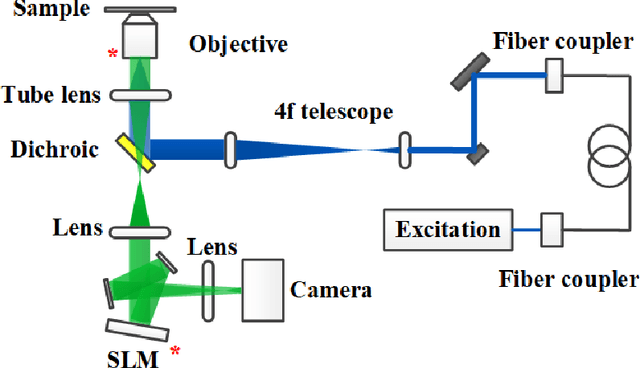
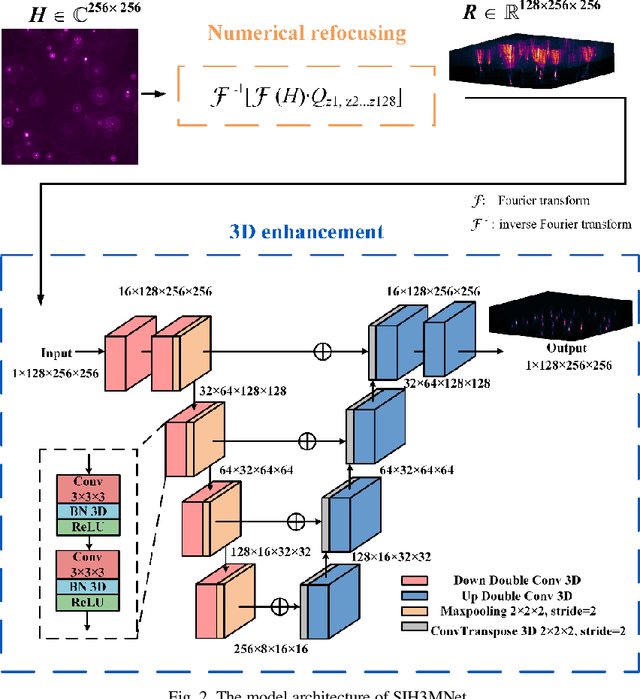
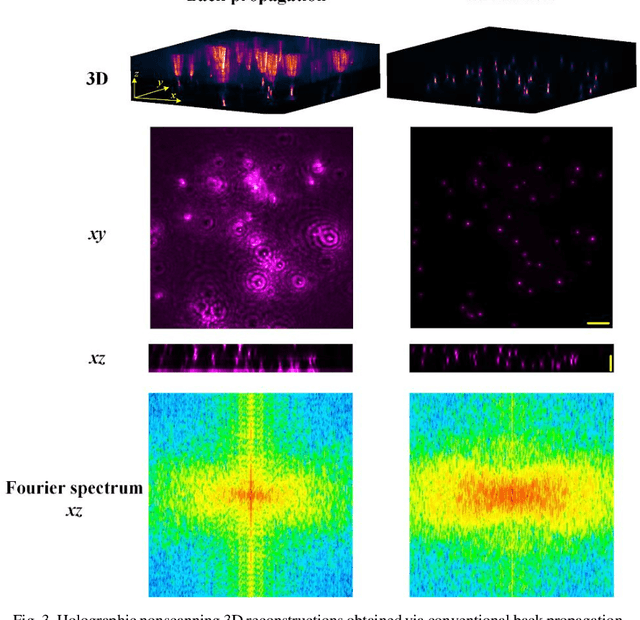
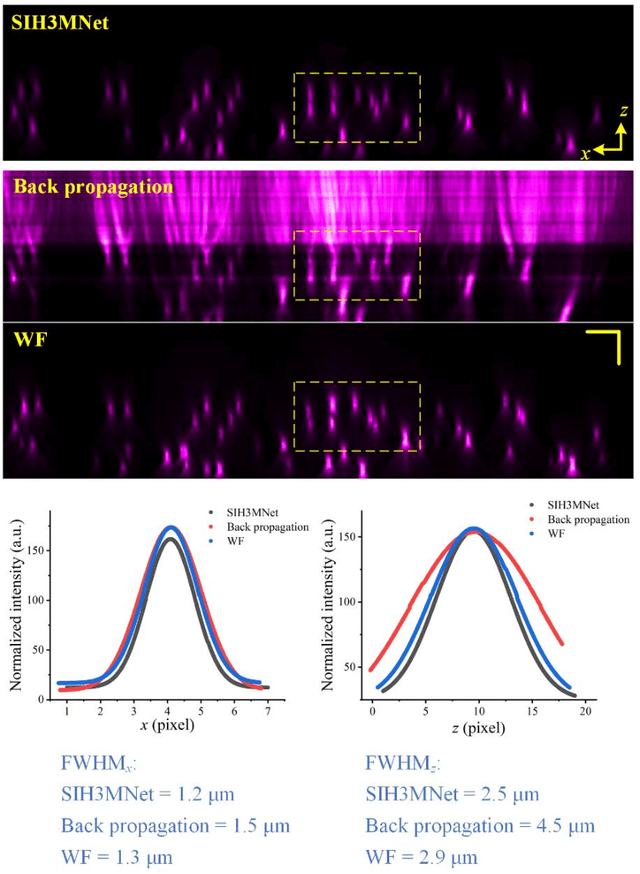
Abstract:We present a deep learning driven computational approach to overcome the limitations of self-interference digital holography that imposed by inferior axial imaging performances. We demonstrate a 3D deep neural network model can simultaneously suppresses the defocus noise and improves the spatial resolution and signal-to-noise ratio of conventional numerical back-propagation-obtained holographic reconstruction. Compared with existing 2D deep neural networks used for hologram reconstruction, our 3D model exhibits superior performance in enhancing the resolutions along all the three spatial dimensions. As the result, 3D non-scanning volumetric fluorescence microscopy can be achieved, using 2D self-interference hologram as input, without any mechanical and opto-electronic scanning and complicated system calibration. Our method offers a high spatiotemporal resolution 3D imaging approach which can potentially benefit, for example, the visualization of dynamics of cellular structure and measurement of 3D behavior of high-speed flow field.
Blending Is All You Need: Cheaper, Better Alternative to Trillion-Parameters LLM
Jan 09, 2024Abstract:In conversational AI research, there's a noticeable trend towards developing models with a larger number of parameters, exemplified by models like ChatGPT. While these expansive models tend to generate increasingly better chat responses, they demand significant computational resources and memory. This study explores a pertinent question: Can a combination of smaller models collaboratively achieve comparable or enhanced performance relative to a singular large model? We introduce an approach termed "blending", a straightforward yet effective method of integrating multiple chat AIs. Our empirical evidence suggests that when specific smaller models are synergistically blended, they can potentially outperform or match the capabilities of much larger counterparts. For instance, integrating just three models of moderate size (6B/13B paramaeters) can rival or even surpass the performance metrics of a substantially larger model like ChatGPT (175B+ paramaters). This hypothesis is rigorously tested using A/B testing methodologies with a large user base on the Chai research platform over a span of thirty days. The findings underscore the potential of the "blending" strategy as a viable approach for enhancing chat AI efficacy without a corresponding surge in computational demands.
BayesFT: Bayesian Optimization for Fault Tolerant Neural Network Architecture
Sep 30, 2022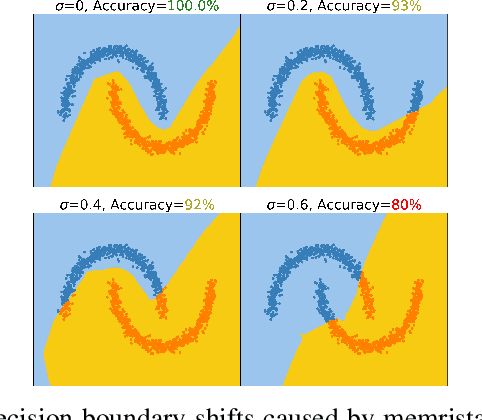

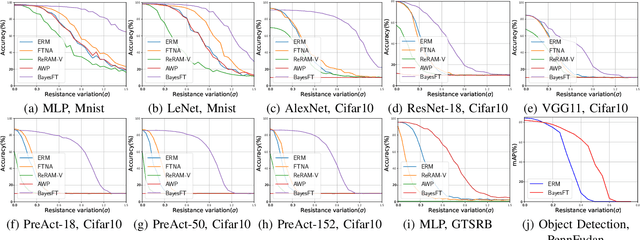

Abstract:To deploy deep learning algorithms on resource-limited scenarios, an emerging device-resistive random access memory (ReRAM) has been regarded as promising via analog computing. However, the practicability of ReRAM is primarily limited due to the weight drifting of ReRAM neural networks due to multi-factor reasons, including manufacturing, thermal noises, and etc. In this paper, we propose a novel Bayesian optimization method for fault tolerant neural network architecture (BayesFT). For neural architecture search space design, instead of conducting neural architecture search on the whole feasible neural architecture search space, we first systematically explore the weight drifting tolerance of different neural network components, such as dropout, normalization, number of layers, and activation functions in which dropout is found to be able to improve the neural network robustness to weight drifting. Based on our analysis, we propose an efficient search space by only searching for dropout rates for each layer. Then, we use Bayesian optimization to search for the optimal neural architecture robust to weight drifting. Empirical experiments demonstrate that our algorithmic framework has outperformed the state-of-the-art methods by up to 10 times on various tasks, such as image classification and object detection.
Long-run User Value Optimization in Recommender Systems through Content Creation Modeling
Apr 25, 2022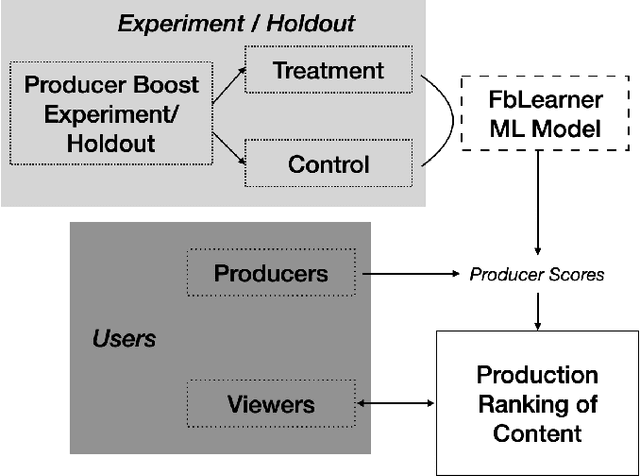
Abstract:Content recommender systems are generally adept at maximizing immediate user satisfaction but to optimize for the \textit{long-run} user value, we need more statistically sophisticated solutions than off-the-shelf simple recommender algorithms. In this paper we lay out such a solution to optimize \textit{long-run} user value through discounted utility maximization and a machine learning method we have developed for estimating it. Our method estimates which content producers are most likely to create the highest long-run user value if their content is shown more to users who enjoy it in the present. We do this estimation with the help of an A/B test and heterogeneous effects machine learning model. We have used such models in Facebook's feed ranking system, and such a model can be used in other recommender systems.
CoSQL: A Conversational Text-to-SQL Challenge Towards Cross-Domain Natural Language Interfaces to Databases
Sep 11, 2019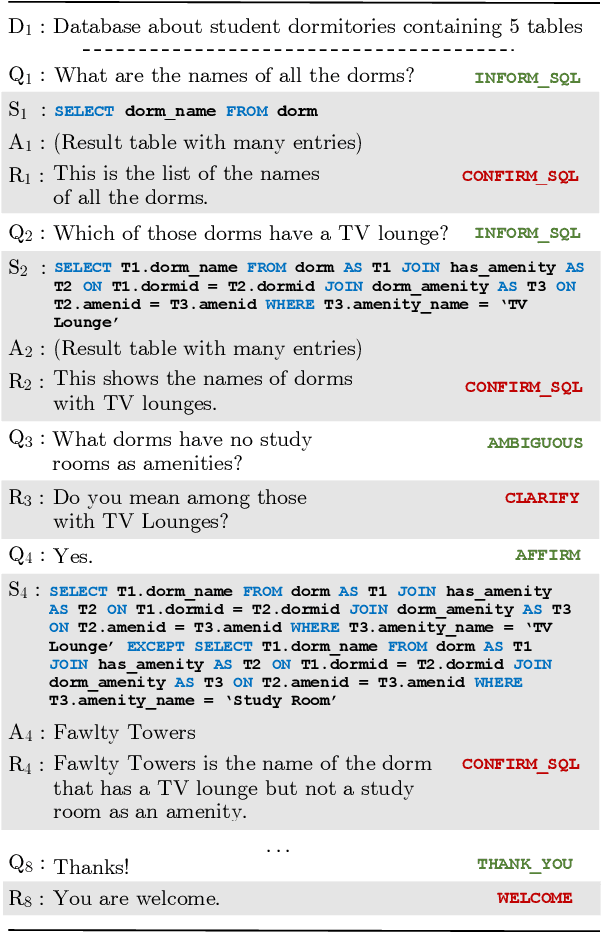
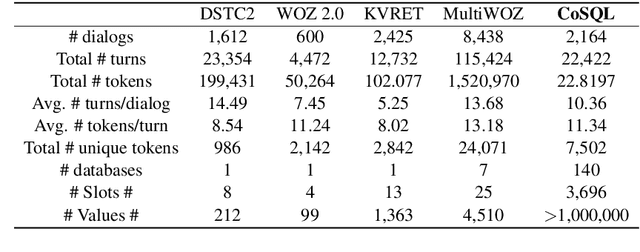
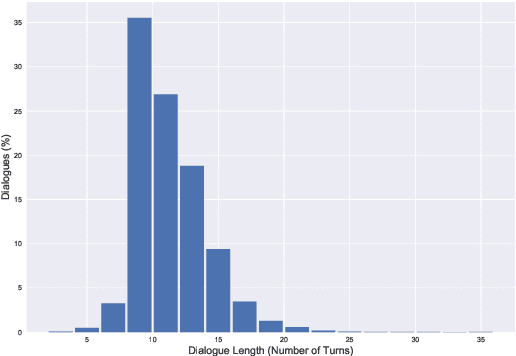
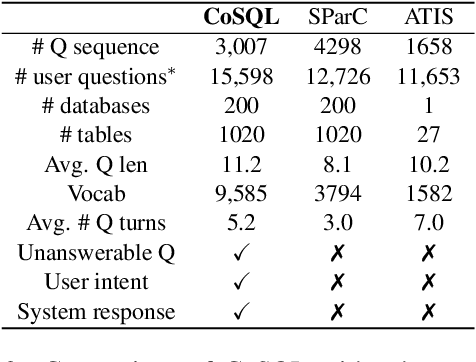
Abstract:We present CoSQL, a corpus for building cross-domain, general-purpose database (DB) querying dialogue systems. It consists of 30k+ turns plus 10k+ annotated SQL queries, obtained from a Wizard-of-Oz (WOZ) collection of 3k dialogues querying 200 complex DBs spanning 138 domains. Each dialogue simulates a real-world DB query scenario with a crowd worker as a user exploring the DB and a SQL expert retrieving answers with SQL, clarifying ambiguous questions, or otherwise informing of unanswerable questions. When user questions are answerable by SQL, the expert describes the SQL and execution results to the user, hence maintaining a natural interaction flow. CoSQL introduces new challenges compared to existing task-oriented dialogue datasets:(1) the dialogue states are grounded in SQL, a domain-independent executable representation, instead of domain-specific slot-value pairs, and (2) because testing is done on unseen databases, success requires generalizing to new domains. CoSQL includes three tasks: SQL-grounded dialogue state tracking, response generation from query results, and user dialogue act prediction. We evaluate a set of strong baselines for each task and show that CoSQL presents significant challenges for future research. The dataset, baselines, and leaderboard will be released at https://yale-lily.github.io/cosql.
 Add to Chrome
Add to Chrome Add to Firefox
Add to Firefox Add to Edge
Add to Edge